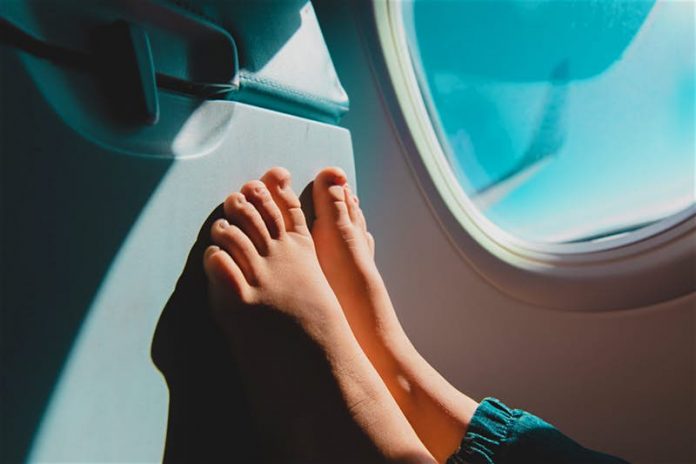What’s the world’s longest flight? If you said Singapore Airlines between Newark near New York and Changi in Singapore, you’d be right. A specially-outfitted, Airbus A350-900ULR (that’s for “ultra-long-range”) makes the eighteen hour and forty-five minute trip between these two world cities every day, departing at just after 10am and arriving just after 5pm the next day, local times.

But this is a premium plane: it’s mostly business class, with fully flat beds that offer direct access to the aisle for every passenger, with the usual wonderful Singapore Airlines service to boot, plus a cabin of premium economy seats down the back.
The rise of ultra-longhaul flights
This kind of ultra-long-haul flight is getting much more common. There are dozens of flights longer than fourteen hours, an amount of time that only a few years ago would have been unthinkable.
One of Qantas’ two London flights, with business, premium economy and economy, now includes a 17-hour leg from Perth to London . Qantas also wants to add nonstop flights that would take passengers from Sydney to London and Sydney to New York in 20 hours. Air New Zealand flies nonstop from Chicago to Auckland in sixteen hours.
Moreover, both Perth-London and Chicago-Auckland have the uncomfortably narrow nine-abreast Boeing 787 Dreamliner seats — as, indeed, do most Dreamliners. Japan Airlines’ Dreamliners are the exception – it uses an eight-seat configuration for its long-haul fleet. Divide the 17 inches of seat width from the extra seat between seven friends and you can imagine how much more comfortable you could be.
And that’s the trick: some of these longest flights have some of the world’s most comfortable seats in economy. Auckland to Dubai on Emirates (17 hours plus) uses the hugely popular Airbus A380 with its wide seats, and with an inch more legroom than many other airlines — like, for example, Qantas, whose Dallas/Fort Worth-Sydney flights (also 17 hours) are also on the A380.
Delta’s 16-to-17-hour flight between Johannesburg and Atlanta is on a Boeing 777-200LR (that’s for “long range”), and like all Delta 777s there are only nine seats in each row unlike the majority of airlines with ten. Again, you get to split the 17 inches of that missing seat with everyone else in the row. That’s elbow-room you can take to the bank.
Making the most of your time in the sky
But do you want to take these flights? And if you do, how do you survive?
Let me be clear: I would seriously consider taking a connecting flight over any nonstop of over fourteen hours. That’s even true in the roomier seats of premium economy, and perhaps even in business class — yes, as an aviation journalist I am lucky enough to have frequent flyer points to burn for upgrades occasionally, and sometimes get invited to try out new seats.
Especially on routes where an ultra-long-haul nonstop costs extra, I’d normally take the stopover. Think about tacking 24 hours into the middle of the trip to explore one of the world’s great hub cities like Hong Kong, Singapore or Seoul.
Choosing the right ultra-longhaul flight
When booking a really long flight, be very thoughtful about what airplane you’re going to be flying on. New planes like Airbus’ A350 XWB and Boeing’s 787 Dreamliner have more composite material in them instead of metal, which means they can maintain a lower cabin altitude (6000 feet rather than 8000, which is a noticeable difference on a long flight) with air that’s less dry and dehydrating.
But note, as I mentioned, that only Japan Airlines’ long-haul 787 flights have comfortable seats. It’s unfortunate: Boeing advertised the 787 Dreamliner with eight spacious seats in each row, but it made it just wide enough for airlines to squeeze nine seats in. With the exception of ultra-low-cost and charter/leisure carriers like Air Caraïbes and Frenchbee, the Airbus A350’s wider seats have stuck with airlines, so that’s the one to pick if you can. The A380’s wide seats, quiet ride and spacious cabin are a really good second choice.
On any flight like this, I absolutely make sure to pack a change of clothes for the plane — a pair of comfy pyjamas or, more likely, a fresh t-shirt and a pair of loose cotton shorts. Don’t forget the flip-flops: those lavatory floors don’t get cleaned for the entire length of the flight, and people are gross.
Definitely consider packing a couple of big bottles of water. On shorter flights I try to aim for between 500mL and a litre of non-alcoholic drinks (mostly water, juice for variety, and not fizzy drinks other than sparkling water) per hour, and that’s equally important on longer trips. If you have a couple of larger bottles at home destined for the recycling, rinse them out and head through security with them empty, and then fill them up in the airport. Water bottle filling stations are very common these days.
